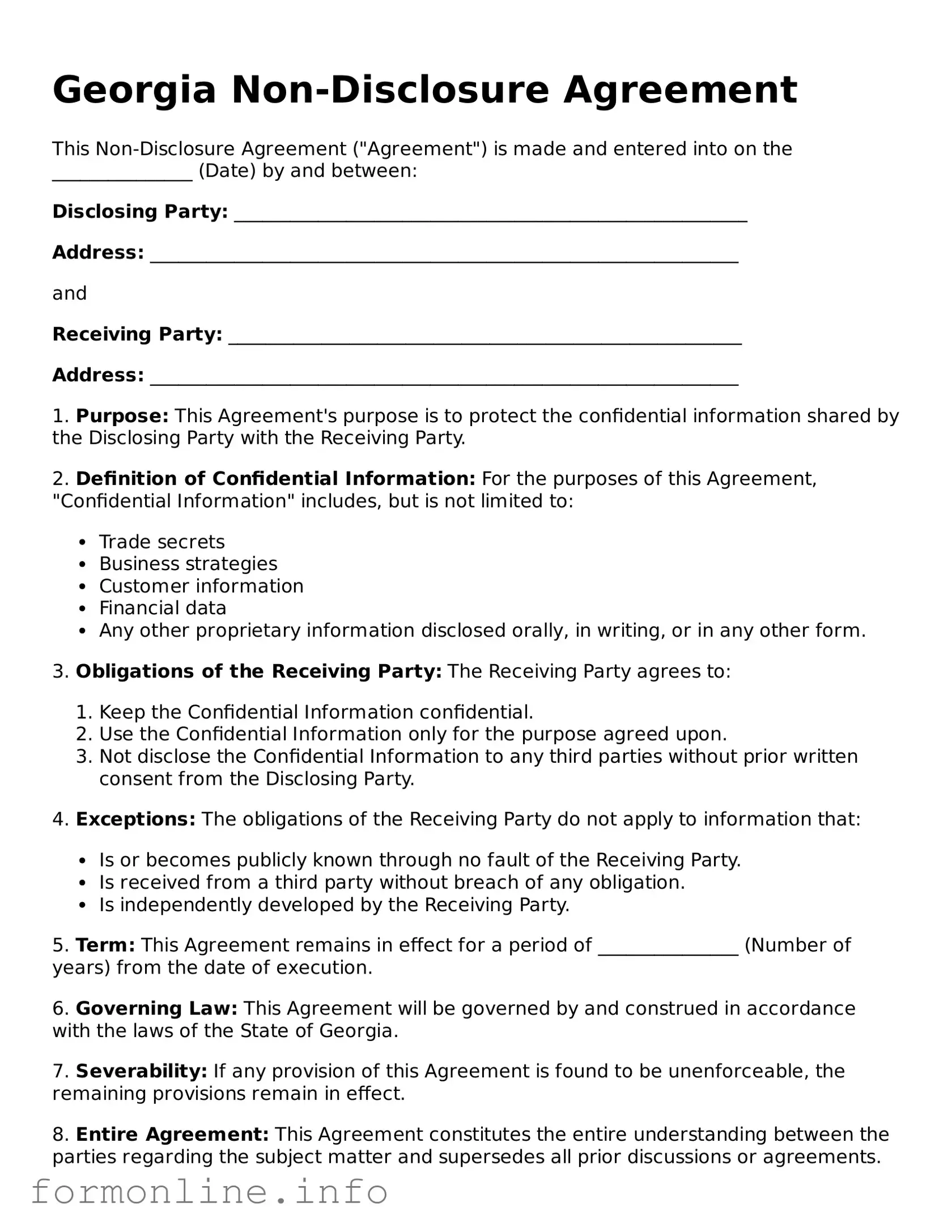Georgia Non-Disclosure Agreement
This Non-Disclosure Agreement ("Agreement") is made and entered into on the _______________ (Date) by and between:
Disclosing Party: _______________________________________________________
Address: _______________________________________________________________
and
Receiving Party: _______________________________________________________
Address: _______________________________________________________________
1. Purpose: This Agreement's purpose is to protect the confidential information shared by the Disclosing Party with the Receiving Party.
2. Definition of Confidential Information: For the purposes of this Agreement, "Confidential Information" includes, but is not limited to:
- Trade secrets
- Business strategies
- Customer information
- Financial data
- Any other proprietary information disclosed orally, in writing, or in any other form.
3. Obligations of the Receiving Party: The Receiving Party agrees to:
- Keep the Confidential Information confidential.
- Use the Confidential Information only for the purpose agreed upon.
- Not disclose the Confidential Information to any third parties without prior written consent from the Disclosing Party.
4. Exceptions: The obligations of the Receiving Party do not apply to information that:
- Is or becomes publicly known through no fault of the Receiving Party.
- Is received from a third party without breach of any obligation.
- Is independently developed by the Receiving Party.
5. Term: This Agreement remains in effect for a period of _______________ (Number of years) from the date of execution.
6. Governing Law: This Agreement will be governed by and construed in accordance with the laws of the State of Georgia.
7. Severability: If any provision of this Agreement is found to be unenforceable, the remaining provisions remain in effect.
8. Entire Agreement: This Agreement constitutes the entire understanding between the parties regarding the subject matter and supersedes all prior discussions or agreements.
IN WITNESS WHEREOF, the parties have executed this Non-Disclosure Agreement as of the date first above written.
Disclosing Party Signature: __________________________ Date: ________________
Receiving Party Signature: __________________________ Date: ________________
